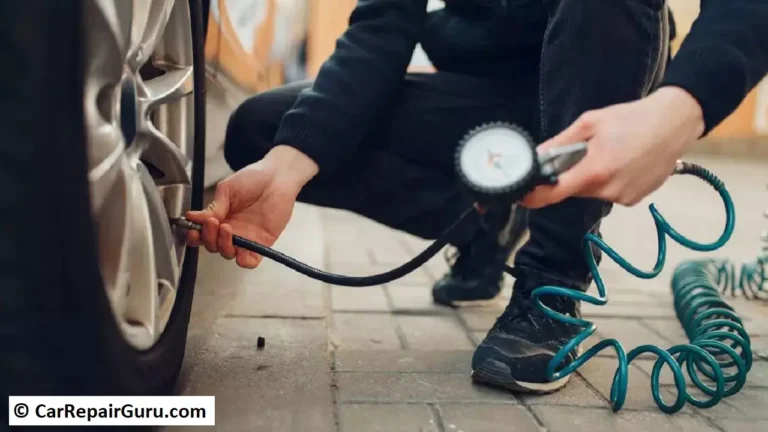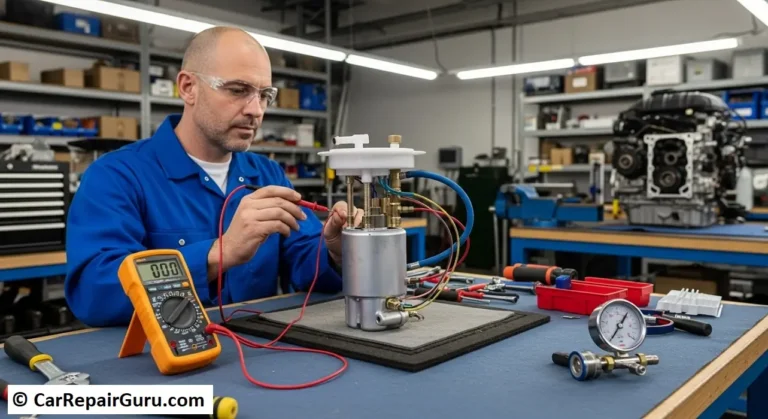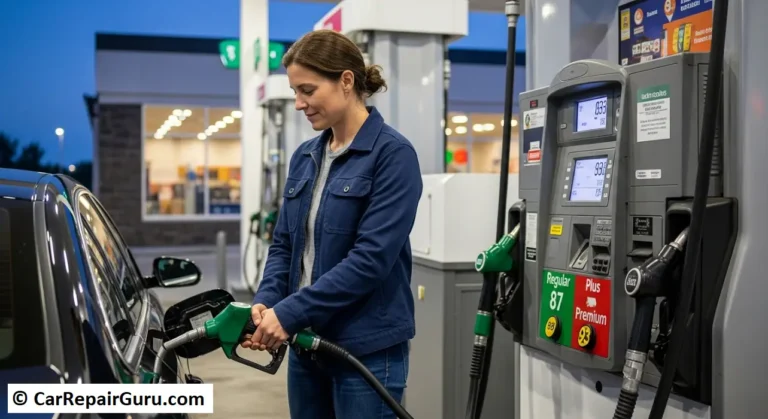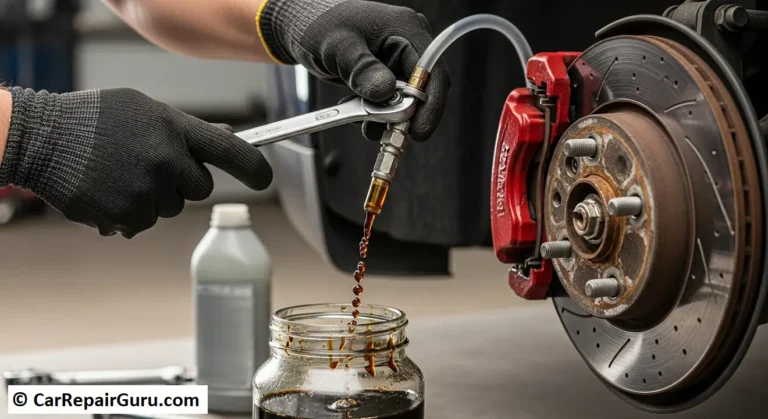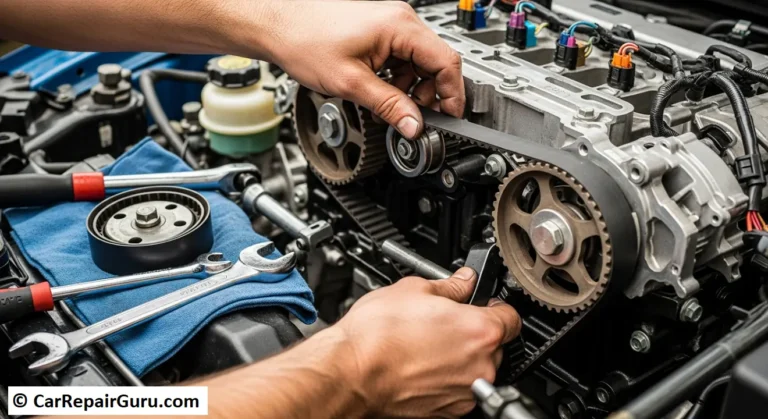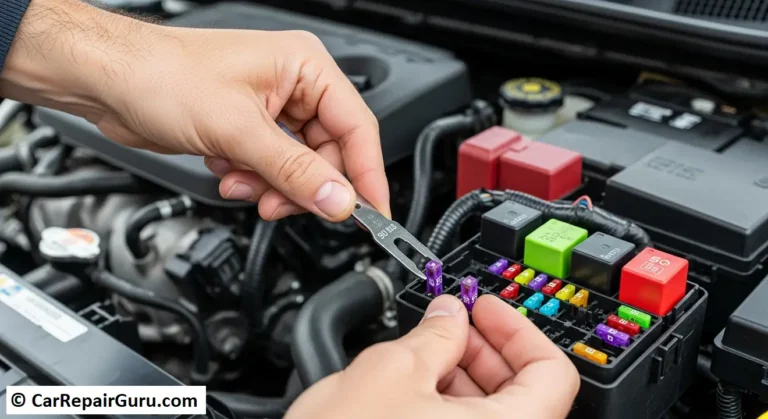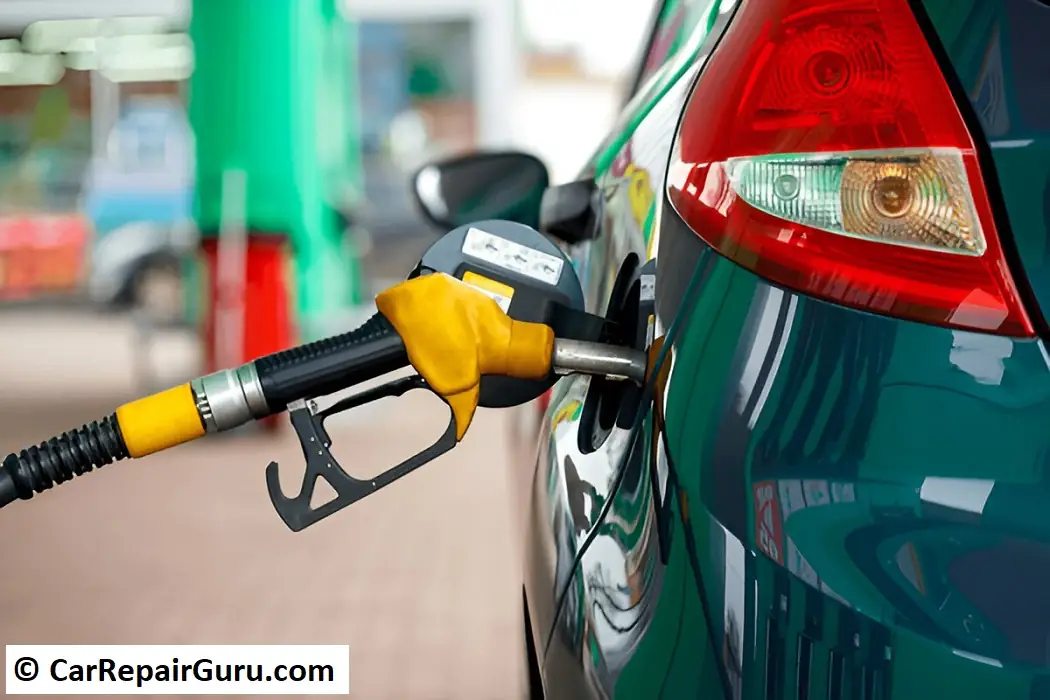
Imagine cutting your fuel costs without changing your daily routine too much. Sounds good, right? That’s exactly what fuel efficiency hacks can help you achieve. Whether you drive to work, run errands, or take long road trips, the way you maintain your car and drive can significantly impact gas mileage and fuel consumption.
With fuel prices constantly fluctuating, improving fuel economy isn’t just about saving a few bucks—it’s about maximizing every drop of gas you pay for. The right habits can also reduce carbon emissions, making your drive more environmentally friendly.
By applying eco-driving techniques, keeping up with car maintenance, and planning smarter routes, you can extend the life of your vehicle while keeping your fuel expenses in check. In this guide, we’ll walk you through proven fuel efficiency hacks that will help you get the most out of every gallon, no matter what you drive.
Vehicle Maintenance for Better Fuel Economy
Taking care of your car isn’t just about preventing breakdowns—it’s also one of the easiest ways to improve gas mileage. A well-maintained vehicle runs more efficiently, burns less fuel, and helps you save money in the long run. Here are two essential fuel efficiency hacks that every driver should follow.
Check and Maintain Proper Tire Pressure
Did you know that driving with underinflated tires can reduce fuel efficiency by up to 3%? When your tires don’t have enough air, they create more rolling resistance, forcing your engine to work harder and consume more fuel.
To maximize gas mileage, check your tire pressure at least once a month and inflate them to the manufacturer’s recommended levels. Most vehicles have a sticker inside the driver’s door or in the owner’s manual specifying the correct PSI (pounds per square inch). Properly inflated tires not only help you save fuel, but they also extend tire lifespan and improve safety.
Regular Oil Changes and Engine Tune-ups
Your car’s engine is like its heart—if it’s not running efficiently, it’s burning more fuel than necessary. Dirty engine oil creates friction, while clogged air filters restrict airflow, both of which reduce fuel economy.
By following your vehicle’s recommended oil change schedule, using high-quality oil, and replacing air filters as needed, you ensure smooth engine performance. Regular engine tune-ups also help catch small issues before they become big problems, keeping your car running efficiently and your fuel consumption in check.
Simple maintenance can make a big difference. Keep up with these fuel efficiency hacks, and you’ll see the savings add up over time.
Driving Techniques to Save Fuel

How you drive plays a huge role in how much fuel your car consumes. Even with a well-maintained vehicle, poor driving habits can significantly reduce fuel efficiency. By adopting these fuel-saving driving techniques, you can get more miles per gallon and keep fuel costs in check.
Drive Smoothly with Gentle Acceleration and Braking
Rapid acceleration and sudden braking may feel exhilarating, but they come at a cost—higher fuel consumption. Aggressive driving forces your engine to burn more fuel than necessary, reducing your overall gas mileage.
Instead, practice eco-driving techniques by accelerating gradually and braking gently. Anticipate traffic flow and avoid unnecessary stops to maintain momentum. This simple adjustment can boost your fuel economy by up to 30%, especially in city driving conditions.
Maintain a Steady Speed with Cruise Control
Frequent speed changes burn more fuel than driving at a consistent pace. On highways, maintaining a steady speed helps your engine operate efficiently, reducing fuel consumption.
Using cruise control on long trips is one of the easiest fuel efficiency hacks to improve gas mileage. It prevents unnecessary acceleration and ensures your car stays in an optimal fuel-saving range. However, avoid using cruise control on hilly terrain, where manual adjustments can be more efficient.
Reduce Idling Time to Save Fuel
Many drivers leave their engines running while waiting in traffic, at drive-thrus, or when warming up their car. But here’s the truth: idling for more than 30 seconds wastes fuel. Modern engines don’t need long warm-ups, even in cold weather.
If you’re parked or waiting, turn off your engine. Restarting your car uses less fuel than idling for extended periods. This simple habit can make a noticeable difference in your fuel economy over time.
By implementing these fuel-saving driving habits, you’ll not only reduce fuel costs but also extend the life of your vehicle.
Reduce Vehicle Weight and Improve Aerodynamics
The heavier your car, the harder your engine has to work, leading to higher fuel consumption. Similarly, poor aerodynamics create drag, making your vehicle less efficient. By lightening your load and reducing wind resistance, you can significantly improve gas mileage.
Remove Unnecessary Load from Your Car
Every extra pound in your vehicle requires more energy to move. Carrying heavy or unnecessary items in your trunk or back seat increases fuel consumption, especially during city driving.
To improve fuel efficiency, regularly clear out items you don’t need, such as sports gear, tools, or heavy bags. While a few extra pounds may not seem like much, removing just 100 pounds can increase gas mileage by up to 2%.
Improve Aerodynamics by Removing Roof Racks
Roof racks and cargo boxes are useful for road trips, but they create wind resistance, making your engine work harder. Even when empty, a roof rack can reduce fuel economy by up to 10% at highway speeds.
For better fuel efficiency, remove roof racks when not in use and keep windows closed at high speeds to reduce drag. A streamlined car moves through the air more smoothly, helping you save fuel and drive more efficiently.
Plan Your Trips Efficiently
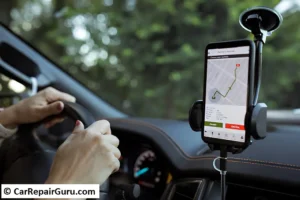
A little planning can go a long way in improving fuel efficiency. Unnecessary trips, backtracking, and getting stuck in traffic all lead to wasted fuel. By being strategic about when and where you drive, you can save fuel and time.
Combine Errands to Reduce Extra Driving
Instead of making multiple short trips throughout the day, try to combine errands into a single, efficient route. Cold engines consume more fuel, so reducing the number of times your car starts from a cold state helps improve gas mileage.
Additionally, avoid driving during rush-hour traffic, where frequent stops and slow speeds waste fuel. If possible, schedule errands during off-peak hours to enjoy smoother traffic flow and better fuel economy.
Use Navigation Apps to Find the Most Efficient Routes
Modern navigation apps like Google Maps and Waze provide fuel-saving driving habits, showing the fastest and most efficient routes based on real-time traffic data. These apps can help you avoid congested roads and unnecessary detours, reducing fuel consumption.
By planning ahead and choosing smarter routes, you’ll not only save fuel but also reduce wear and tear on your vehicle.
Use Technology to Monitor Fuel Efficiency
With today’s technology, tracking and improving your fuel efficiency is easier than ever. By using smart devices and apps, you can monitor your fuel consumption, adjust your driving habits, and maximize gas mileage.
Install a Fuel Consumption Monitoring Device
A fuel consumption monitor connects to your car’s onboard diagnostics (OBD) system and provides real-time data on fuel economy. These devices help drivers understand how their driving style impacts fuel consumption and suggest areas for improvement.
With instant feedback on acceleration, braking, and idling, a monitoring device can encourage more efficient driving habits, helping you save fuel over time.
Use Fuel Efficiency Apps for Smarter Driving
Apps like Fuelly, GasBuddy, and Drivvo allow you to track fuel consumption, find cheaper gas stations, and receive personalized tips for better fuel economy. Some apps even analyze driving patterns and provide suggestions to improve gas mileage.
By leveraging technology, you can make informed decisions that keep fuel costs low and driving efficiency high.
Alternative Transportation Methods to Save Fuel

Sometimes, the best way to save fuel is to drive less. Exploring alternative transportation options can significantly reduce your fuel consumption, lower costs, and even benefit the environment.
Carpooling and Ride-Sharing for Reduced Fuel Costs
Carpooling is one of the easiest ways to cut down on fuel expenses while reducing traffic congestion. Sharing rides with coworkers, friends, or neighbors means fewer cars on the road and lower fuel consumption for everyone.
Services like UberPool and BlaBlaCar make it easier to find shared rides, helping to optimize fuel use and split costs. If multiple people are heading in the same direction, why not share the ride and the savings?
Consider Public Transport or Biking for Short Trips
For short commutes, consider walking, biking, or using public transport instead of driving. A quick bike ride or a bus trip can drastically cut your fuel usage while offering health benefits and reducing carbon emissions.
By integrating these habits into your routine, you’ll rely less on your car, spend less on gas, and contribute to a greener planet.
Conclusion
Improving your fuel efficiency doesn’t require drastic changes—just a few smart habits can make a big difference. From regular vehicle maintenance and eco-friendly driving techniques to reducing extra weight, planning efficient trips, and leveraging technology, these fuel efficiency hacks help you save fuel and cut costs.
Consistency is key. By maintaining your car properly, driving smoothly, and considering alternative transportation when possible, you’ll enjoy better gas mileage and long-term savings.
Small adjustments lead to big fuel savings over time. Start applying these strategies today and watch your fuel economy improve! ⛽
FAQs
Q1: What are the best ways to improve fuel efficiency?
A: Regular maintenance, smooth driving, reducing excess weight, and eco-driving techniques can significantly enhance gas mileage.
Q2: Does using premium fuel improve gas mileage?
A: Only if your car requires it. For most vehicles, regular maintenance and proper tire pressure matter more than fuel grade.
Q3: How does cruise control help save fuel?
A: It keeps a steady speed, preventing unnecessary acceleration and braking, leading to improved fuel economy.
Q4: Does air conditioning reduce fuel efficiency?
A: Yes, using AC increases fuel consumption, especially at low speeds. At highway speeds, open windows can cause drag, so AC may be better.
Q5: What are some fuel-saving driving habits?
A: Avoid rapid acceleration, coast to a stop, maintain steady speeds, and minimize idling to improve fuel efficiency.
